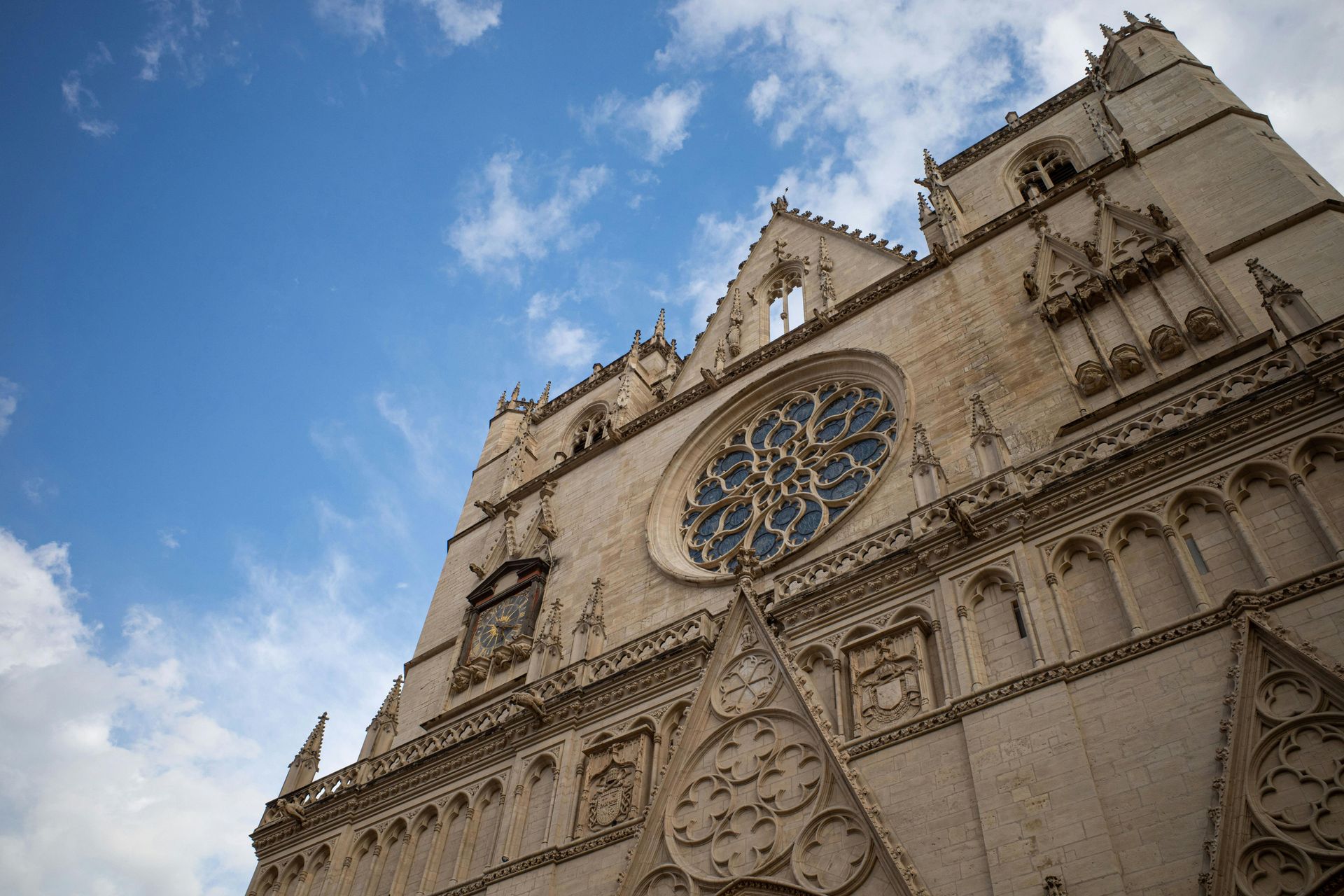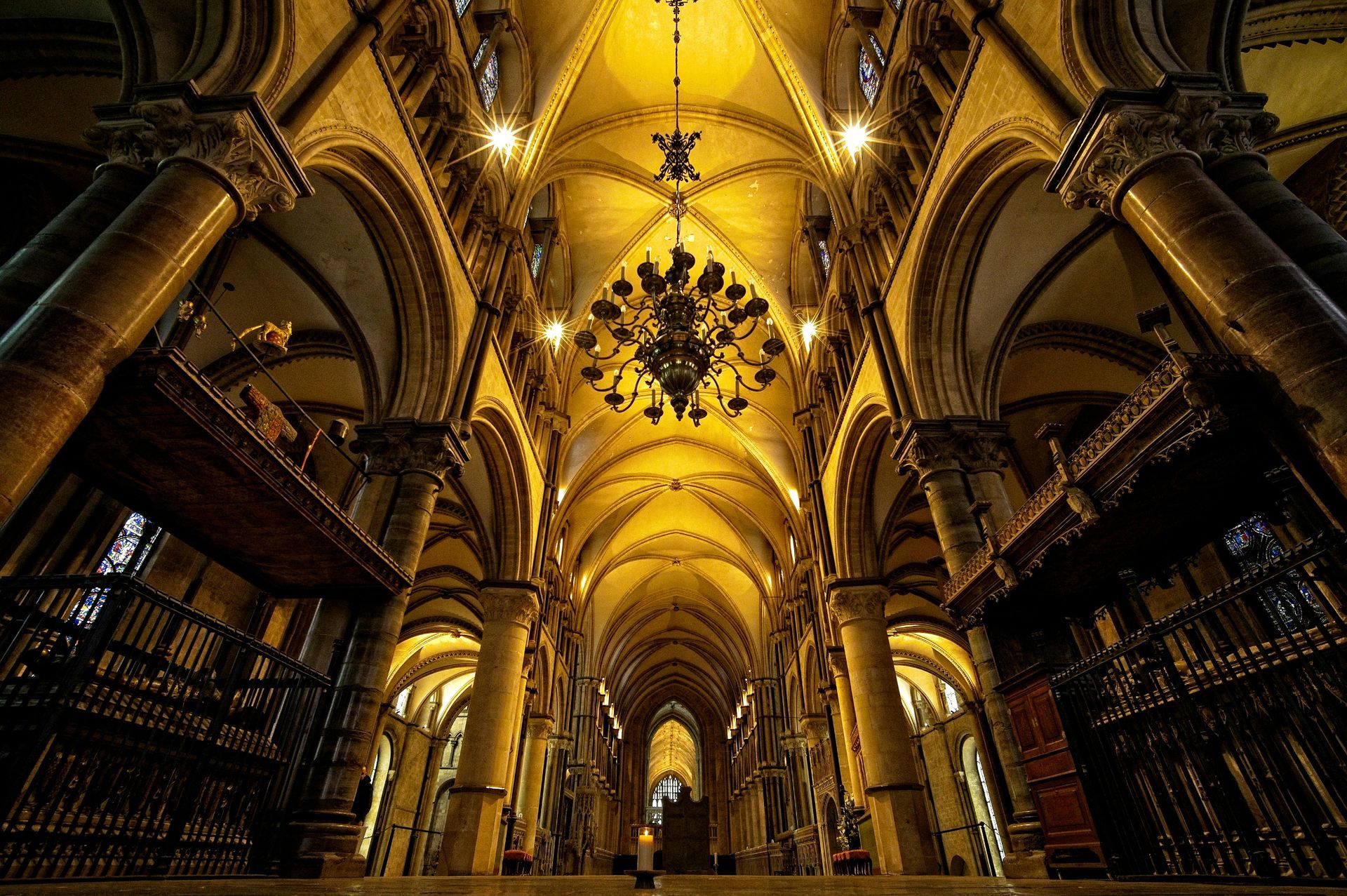The Minor Seminary Transparency Initiative - Debrief Part 2
Bernadette Howell, Spiritual Health Practitioner - January 14, 2025
Breaking silence. Confronting clergy abuse.
The Minor Seminary Transparency Initiative
Based on comments received last week, and for which, thank you, I’m choosing again this week to debrief some more on certain documents found on The Minor Seminary Transparency Initiative website.
As I debrief, you may wish to make that extra cup of coffee!
This blog is filled with important information and for some, it will feel ‘dense’. But the intent is to help you decipher the story behind some of the documents; to understand what was happening and also, what was known. It sadly has bearing on how victims were ignored in favour of priests and monks being protected instead. It is the proven reality of the sexual abuse that has occurred over the years at the seminary, and which has been so consistently and intentionally concealed.
Before proceeding much further, there is one thing I need to point out and correct from last week.
The victim-survivor who I referred to in last week’s blog as the “1993” victim-survivor and who wrote, “My greatest disappointment is that you have someone I confided in, Monsignor Gregory Smith on your review panel, and I smell another rat” I need, for the record, to rename as the “1992” victim-survivor.
While in his email he refers to events that took place in 1993, his disclosure was in fact made known to the Vancouver Archdiocese in 1992, thus in advance of, and separate to, the three complainants who ended up testifying in the later criminal trial.
Consequently, for the record, I wish to correct this and hereafter, refer to him as the “1992” victim-survivor.
If you refer to Volume 4, Harold Vincent Sander, page 156, you will find a letter from someone called Mimi Dent of Catholic Family Services, dated 11thDecember 1992, writing to Archbishop Exner and bringing this victim survivor’s disclosure forward to the attention of the Vancouver Archbishop:
“(Name redacted) attended Westminster Abbey from 1990 – 1993 (Mimi Dent later corrects herself on page 159 in a memo to Louise Murphy, Secretary to the Archbishop to clarify that those dates should have read “from 1980 – 1983”). He was a minor seminarian attending grade 8,9 and 10. (Name redacted) recalls that Father Placidus would pay special attention to him, would take special notice of him. (Name redacted) would receive hugs. By the end of the second year, grade 9, the hugs escalated to kisses on the month that felt “inappropriate”.
Further down on page 158, this social worker goes on to say:
“To the question, “what would you hope Archbishop Exner could do for you.” (Name redacted) paused and stated, “Possibly I would want to meet with him. Archbishop Exner is an incredible pastor”. I affirmed him in his statement. He paused and stated, “the suspension of a priest is not a bad idea… I would also hope something would be done to get Father Placidus some counselling.”
This is followed by some barely decipherable handwritten notes on page 160. It is Archbishop Exner’s handwriting, making notes on this disclosure, albeit sparse ones.
In part you can read:
“…confided in his friend, an ex-seminarian who reminded him of rumours about others who apparently had similar problems.”
And the last sentence:
“….again stated he had no ( ‘intention of pursuing’?) ...legal charges”.
And so, not only did Archbishop Exner receive this complaint and disclosure from a social worker/counsellor providing support to this victim-survivor, but he was aware that there were rumours about others who apparently had similar problems - to the point he made a note of this on his own files.
So, in 1992 and before the three known plaintiffs went to the RCMP to press charges, Archbishop Exner was already aware of two very serious and separate complaints received over the span of the previous five years:
1. Firstly in 1987, a group of seminarians wrote to the Papal Nuncio and to the Abbott about Placidus’s “homosexual activity” with the seminarians.
2. Then in 1992, Catholic Family Services alerted the archbishop to a specific individual who they were counselling:
What, if anything, did Archbishop Exner do to redress Placidus’s heinous behaviours?
Why do we not see any following files relating to actions Archbishop Exner took?
One can only come to the conclusion that little, or no action was taken.
It is common knowledge that Church leaders and the Benedictine community of monks were well pleased that Placidus’ was later acquitted in the criminal trial, despite his own admissions in court of a sexual genital encounter with a minor seminarian and kissing the lips of another.
To receive complaints and disclosures but to then ignore them or downplay them is appalling. It is also symptomatic of a group of men who believe themselves superior and above the law.
Take for example, the letter from the “Former Seminarians’ to the Papal Nuncio Volume 4, Harold Placidus Sander, page 47.
This is yet another example of cover-up.
Why was this letter not brought to the attention of the Clergy Abuse Review Committee in 2018 and shared with us?
You will see that the former seminarians who wrote this letter were concerned about doing the right thing and were very conscious that they were dealing with a serious and delicate matter. I can well understand their desire back then to not reveal their own names and identities for fear of repercussions.
They refer on several occasions to raising this “sensitive issue” and they even apologize, saying that “if this offends you or your confreres we apologize”.
But these courageous seminarians are very clear with what they are sharing and disclosing, adding that “these accusations are not unfounded, and we make them with the utmost sincerity.”
I truly applaud the honesty, courage and upright actions these men took, whoever they were, in doing the right thing and wishing to address the concerning behaviours that they were aware of.
THEY saw and understood that what was taking place was utterly wrong.
Why did the monks, the Abbott, the Papal Nuncio and the Archbishop not see it?
Why did the monks, the Abbott, the Papal Nuncio and the Archbishop not have the honesty, courage and upright concern to act on this?
Indeed, up to and including more recent times, why did the monks, the Abbott and the Archbishop not do the right thing and admit they were aware of these concerning behaviours for decades?
Instead, we find denial and talk of false accusations; blind allegiance to a monk and priest in favour of what lay people were bringing to their attention. Not only this, these behaviours were to be followed some years later by the celebration of an ‘acquittal’ when the accused admitted a sexual genital encounter with a minor seminarian and the kissing the lips of another.
This is sheer willful denial of horrendous behaviour.
It was disturbing to read in Volume 8, Post Trial Documents page 11 that, for example, the monk named Augustine Kalberer, says, “In his verdict, the judge said he believed Fr. Placidus but not the complainants”.
How words can be twisted.
He did not say that at all.
The judge said: “The evidence was unreliable” and so “did not prove beyond a reasonable doubt” — but he did not say that he didn’t believe the complainants but believed Placidus!
This monk then goes on to speak of how the community has already suffered enough with the “false charges” in the media.
Good lord. People with their heads in the sand.
Or is that people choosing to put their heads in the sand?
Let me move on to another document.
In Volume 4, Harold Placidus Sander, page 99, you will see a letter from the Abbott John Braganza, written in 2008 and noting that “Father Sander is a person of good moral character.” It is a reference letter and testimonial for suitability for ministry, and speaks to Placidus’s character, The letter concludes:
“The Benedicts of Westminster Abbey agree to indemnify and hold harmless any diocese in which Father serves, for any loss, damage and liability of any kind in the event that any of the representations in this Testimonial are incorrect, incomplete or inaccurate”.
Can YOU see anywhere in this letter and testimonial reference letter written by Abbott John Braganza for this “person of good moral character and reputation” and who has “nothing in his background” any mention about his being prohibited from being in the presence of minors such as was mandated by the court of law in this country?
Not one single mention is made referencing Placidus’s restriction and this caveat that indeed is a huge part of his “moral character” and “reputation”.
I’m not sure about you, but I find this most irresponsible of the then Abbott to be so willfully hiding the truth.
But then, we do know that this Abbott himself, John Braganza, suddenly resigned and disappeared completely from Westminster Abbey in 2022 following concerns “regarding his interpersonal relations.” Curiously, and whether there is any connection or not, this sudden departure all happened in and around the time that all these damning documents were going back and forth between D.H.’s lawyers and the Church’s lawyers.
Another document that poses a question for me relates to why was it, in November 2019, that Archbishop Michael Miller and the then Abbott John Braganza agree together not to publish Placidus’s name in the Vancouver Archdiocese Clergy Sexual Abuse Report?
Why did they withhold this announcement and publication from both the general public and from victim-survivors and their loved ones, already hurting from their lifelong experiences?
The document that I refer to appears in Volume 4, Harold Vincent Sanders, on page 222 and again in Volume 8, Post Criminal Proceedings, on page 67.
In this document Abbott John Braganza emails Archbishop Michael Miller on the topic of the publication of Placidus’s name for the Clergy Sexual Abuse Report being made public in November 2019.
Abbott John Braganza writes:
“Atter having spoken to you on your way back from the Priests’ Study Day I had a chance to speak to the community about the publication of names. Their advice to me was against the publication of his (Placidus) name for the reasons we have outlined in the attachment I have enclosed.”
The Abbott speaks to the community of monks and “their advice was against the publication of his name.”
Why?
And where is the document and attachment that John Braganza mentions that is “enclosed” and which outlines those reasons? Nothing was shared that I can see.
Is anyone else able to find the reasons?
If you can find anything in among the website documents as to why Placidus’s name was not published until after he died, please do let me know.
Maybe I am just not seeing it…
Why are the community of monks at Westminster Abbey and the Archbishop so keen to continue to keep the name of Placidus and his heinous acts out of the light?
So much for the quote on the current website that “sunlight is the best disinfectant” and the desire to now shine a light on things…
Instead, the Archbishop and the Abbott insisted on keeping things in the dark, waiting two and a half years more until Placidus is finally dead and six feet under before acknowledging the horrible crimes this predator priest and monk was enacting on children.
The men who now talk with such ‘gracious words” (as one blog reader names it) on the current website about transparency and who choose to purportedly pay tribute to victim-survivors with flowery words had only so very recently and with calculated precision chosen to keep things in the dark and prolong the agony for Placidus’s victim-survivors, family members, loved ones and those who may have benefitted from knowing sooner.
To this point, and how the community of monks and the archdiocese wished to continue to protect Placidus and not the children, another blog reader this past week shared that:
“While they say Placidus had no involvement with the minor seminary, several documents listed under Harold Vincent Sander make me question that statement. Check out Volume 4, Harold Vincent Sander and check out page 77. It’s all about the monks at the Abbey and it says that. “Fr. Placidus the talented choirmaster of the Abbey, also works in the gardens spread across the Abbey grounds. He is also active in both the guest house and the monastery kitchen.”
This reader goes on to note, “I thought the minor seminarians often had chores in the kitchen and also had times for free time in the garden. Were the students informed to not go near him?”
Good question dear reader.
I doubt it very much that any young minor seminarians were informed not to go near him given that the Abbott Maurus Macrae wanted to reinstate Placidus as a teacher to the minor seminarians very soon after the trial was over, if you can believe this.
And that Abbot John Braganza appointed him as Postulant Master in 2014, thus in charge of young seminarians even though he was publicly known to have had “genital sexual contact” with a young seminarian as well as kissing another on the lips.
The leadership at the Abbey obviously took Placidus’s predatory sexual actions with a ‘pinch of salt’, effectively condoning such behaviours.
One document written more recently by the now current Rector of the Minor Seminary, Anthony Nguyen I find to be very telling and epitomizes the continued lack of understanding of sexual abuse.
In Volume 4, Harold Placidus Sanders, page 248 Fr. Anthony Nguyen writes:
“With regards to his appointment as Postulant Master, Fr. Abbot considered the matter and did not think* that he was no longer a threat given his evidence of conversion after many years after the incident.”
(*grammatical error of a double negative. I believe Anthony Nguyen meant to say that “he did not think that he was a threat any longer…”)
But what the dickens does “evidence of conversion” mean?
And after “the” incident as if there really was one on incident of abusive sexual activity on Placidus’s part?
The current Rector of the Minor Seminary, Anthony Nguyen is providing Archbishop Michael Miller with Placidus’s CV and summarizing what historically happened when it came to light that Placidus had had a “homosexual” encounter (sexual abuse) with a high school seminarian.
And he is reporting what the monks are calling ‘evidence of conversion’.
But bear in mind that Placidus only confessed to this particular event (and there were many others), WHEN confronted!
No conversion or confession was involved, but instead what essentially was a forced admission. Placidus was smart. Had he said nothing, but further complaints were to be received for Placidus knew just how many others he was actively abusing, his game would be up. Best to admit to this one encounter and deflect attention.
Check out Volume 4, Harold Placidus Sander, page 178 in notes produced and signed by the monk Augustine Kalberer’s dated December 17, 1997, after the criminal proceedings have concluded.
Augustine recounts that back in 1983/1984 a minor seminarian reported to him about unwanted sexual advances but did not name the monk and priest who perpetrated this behaviour. Augustine, then the Rector of the minor seminary at the time, shares this with his Vice-Rector, Placidus, who then in turn actually admits it was, in fact, himself who the seminarian was referring to.
He would never have mentioned it had he not been outed.
Roll forward fifteen years to 1997 when Augustine is actually writing up this particular report and he says “I spoke to Father Placidus again in more detail today. He told me that it was the only genital homosexual contact he has ever had.”
And then Augustine adds “His truthfulness in admitting the event is impressive”
Really? Augustine believed him, simply because he said so, and because he was a priest and a friend?
It would be amusing if it were not so tragic, but Augustine goes on to say:
“To my mind, truthfulness is one of Father’s special virtues. In the fifty years I have known him— and during many of them I worked closely with him— I have never known him to tell the slightest lie.”
Hmmm. How can anyone say that of anyone else, that they’ve never told a single lie and be so sure? We can never know such things.
And then all the monks were so keen to believe it was a one-off?
And that Placidus had had a “conversion’?
To this I would say, please, please, please, Mr. Archbishop in charge of the seminary, can you make sure ALL priests and educators and monks and anyone claiming to be representatives of God working and living in this archdiocese be FULLY understanding about the nature of grooming, of sexual abuse, of manipulation, of lying, of hiding one’s actions, and above all of the inability of predator priests to actually believe they are doing anything wrong. Predator priests are consummate con artists.
And, something that has been proven over and over again through research, that if there is one incidence of sexual abuse, there are always others that will be found if one is bothered to look and investigate.
But wait….I catch myself just minutes after writing ‘Mr. Archbishop in charge of the seminary’ as this leads me to point you to further documents.
If you go to Volume 3, Roman Catholic Archbishop of Vancouver, page 72, you will find a very interesting and telling document.
It is written by a Cardinal (Giuseppe) Pizzardo from the Sacred Congregation of Seminaries end Universities in Rome, and is addressed to the Vancouver Archbishop, then Martin Michael Johnson. It is a letter in response to Rome’s receipt of the bishop’s mandatory Quinquennial Report.
The Quinquennial Report, if I remember correctly from my theology days, is a report the bishop must submit to Rome every five years in line with their “ad limina” visit when they meet with the Pope and report on the state of their diocese.
This particular letter from Rome to the Vancouver Archbishop is dated June 11, 1965.
Cardinal Pizzardo (note some additional information about this Cardinal which I share at the end of this blog) writes:
“We did not fail to see the difficulties arising out of the fact that the Seminary belongs to the Benedictine Fathers, who hold the right of ownership and administration. For instance, Your Excellency has informed us that, e.g. “the Deputies cannot carry out their duties satisfactorily and as they should according to the principles of Can. 1359 C.J.C.” (etc.) and that “the Religious do not look upon the seminary as the seminary of the Archdiocese of Vancouver even though this is clearly stated in the Contract of August 25th, 1949.”
The Cardinal goes on to say that:
“In view of all these circumstances, we ask Your Grace confidentially to indicate to us in a brotherly way what you feel should be done about the administration of the seminary.
Indeed this Sacred Congregation is most anxious that Your Excellency should be able to exercise complete authority over the life of this Pious Institute; therefore we would ask you kindly to indicate to this Sacred Office—what are the major difficulties, so that, aided by your good counsel we can find a fitting solution that will preserve and the rights of the local Ordinary.”
To those unfamiliar, the “local Ordinary” here means the bishop.
It appears that there were lots of differences and challenges between the Archbishop and the Abbey; with the Abbey ‘doing its own thing’ and the Archbishop not in full control of it as he should be.
This is further endorsed by a document later on, at page 101 and titled “Bishop Sabatini”. In this document, Bishop Sabatini, Auxiliary Bishop of Vancouver from 1978 – 1982, reports that the final contract with the Benedictines establishing a seminary was signed in 1949 and, on the advice of the Holy See, was to be for 12 years but that, at the time of writing (sometime between 1978 and 1982) “there is no documentary evidence in the archives that this time was ever extended.”
Bishop Sabatini, more interestingly notes:
“There was considerable dissatisfaction with the training given to the seminarians in the 1960s, and Archbishop Duke formed a committee comprised of Fathers J.M.Stewart, J.E.Kilty and J. Hanrahan to discuss the problems and try to remove the difficulties.”
Putting two and two together, this leads one to question:
Why, in 1965 when Cardinal Pizzardo and the Sacred Congregation of Seminaries end Universities were most concerned about how the seminary was being run, was Pladicus, who was Rector of the seminary for the previous ten years found to no longer be in charge?
Why, in 1965, was Placidus taken out of leadership of the seminary and found located in Missouri, auditing some courses?
We see a handwritten letter that Placidus written from Conception Abbey in Missouri, that same year, in which he writes to the Abbott: Volume 4, Placidus Harold Sander) page 42.
In this letter, Placidus refers to “the news of Father Maurus’ appointment” and says, “It’s a relief, and at the same time strange to think of a new situation.”
Hmm.
He then goes on to say “I am only sorry that the past year was – or if I made it – harder for you and I will try to see the present and work with it as ‘the living now’!”
Away and in Missouri on some kind of sabbatical, one wonders why?
And only when away does Placidus learn of the appointment of Father Maurus Macrae as Rector of the Minor Seminary?
Also, why is this “a relief” yet Placidus says at the same time it is “strange” as though it was not what he had wanted or hoped for, for himself.
Lastly why, and for what, does Placidus apologize for, acknowledging that he made the past year so hard?
So many questions and no documents provided to help us understand. But what we do know is that both Rome, the local Vancouver Archbishop and, it would appear, many others, were not happy with how the seminary was being run.
One blog reader asked about a document which details typed notes that Placidus had made for a Vancouver Serra Club luncheon he was due to address on October 17, 1963. See Volume 4 Placidus Harold Sander page 36-41.
Under “Objections to Minor Seminary in general” it ‘appears’ that Placidus is saying things like:
“A lad of 13-17 years of age is too young, doesn’t know his own mind yet. He should see the world first and then decide what he wants to be” and that “It takes a lad from his home and parents during his adolescence, a time during which he most needs both home and parents.”
ALL SO VERY TRUE!
As far as I can make out, these were notes made by Placidus in advance of an address he was due to give whereby he is listing all the objections received from the public, locally and elsewhere. It appears he lists all the objections so that when he speaks at the luncheon, he can then address each of these issues and counteract them instead with words ‘delineated or deployed by Pope John XXXIII in his addresses and letters” which takes up the next four pages of his typing. In other words, the objections were not Placidus's personal ones but certainly ones that had been received and noted.
It is not known if Placidus actually shared all these things, but I encourage you to read the “Criticism of the Minor Seminary at Mission in particular.” Read all sixteen of them and feel free to comment back to me as I will likely visit this document again next week.
And so, dear readers, having read the details of this week’s blog debrief, do you still believe the children up at the Abbey and Christ the King Seminary are safe?
In response to the suspiciously generous and gracious sounding words to be found on The Minor Seminary Transparency Initiative website and written, we assume, by the current Benedictine monks and Church leadership, allow me to borrow words shared by the “1992” victim-survivor. We learn from his email that he “lives on the other side of the world and is no longer living in Canada” but who writes with obvious feeling and intent:
“I truly hope that those who have been damaged by the church with abuse that this is not just another ruse to make those believe that the church cares. I believed in it, and it grossly failed me. Don’t do this to others as well.”
I echo these words.
Let us hope the promises and words found on the website is not just another ruse to make people believe that the Catholic Church cares. I too believed in it, and it grossly failed me. Don’t do this to others as well.
Before I draw to a close this week, allow me share something about that Cardinal Pizzardo who wrote to the Vancouver Archbishop in 1965, concerned about the lack of control the bishop had over the seminary.
Archives opened to the public in 2024 show that Cardinal Pizzardo defended the notorious sex-offender, Marcial Maciel, founder of the Legionaries of Christ. Maciel was a priest known to the Vatican as a drug addict and sexual abuser of seminarians and someone who, under Pope John Paul II, enjoyed the Vatican's favor and the Pope’s friendship for decades. His money and success provided him with protection and influence from his colleagues at the Vatican.
Back in 1956, Pizzardo intervened and prevented much needed measures being put in place by the then “No. 3 in the Vatican’s office for religious orders” a Cardinal Giovanni Battista Scapinelli.
Maciel, under Scapinelli’s instructions and for all his known abusive behaviours, was “to be barred from having contact with young seminarians or be at risk of being suspended from priestly ministry altogether.”
But, as the opened archives in 2024 found, later documents that same year revealed that Cardinal Pizzardo, who at that time was the “No. 2 in the Vatican’s office for religious orders”, effectively ruled over and edited those measures. Instead, Pizzardo lifted the prohibition against contact with seminarians and Maciel was allowed to continue to do what he wanted.
It took a further fifty years before Pope Benedict XVI finally removed Maciel from active ministry, based on the results of an investigation by the Congregation for the Doctrine of the Faith in April 2005.
After Maciel’s death in 2008 “it came to light that he had also maintained sexual relationships with at least four women, one of whom was a minor at the time. He fathered as many as six children, two of whom he is alleged to have sexually abused.”
And all this was allowed to happen thanks to the network of strong ties Maciel built with many of the Church’s most influential conservative leaders and thus, the protection he received.
Are we to really believe things have changed in this day an age?
Gene Thomas Gomulka, an ex-priest of 29 years who was also raised to the title of Monsignor by Pope John Paul II, regularly writes his own blog and speaks a lot about the homosexual networks found within the Catholic Church.
I found these words to be very telling. He writes:
“Many seminarians who were groomed in the seminary are often ordained to see the seminary priest faculty member who introduced them to gay sex be made a bishop. Those bishops often make the men they groomed their secretaries, vocation directors, seminary rectors, and vicar generals.”
It’s all about the network. The priestly network of clericalism and cronyism, but sadly also the network of abuse and coverup.
Till next week,
Bernadette



QUICK Links
Education Links
All Rights Reserved | Outrage Canada | Privacy Policy
Website by EVOLV Digital Marketing

